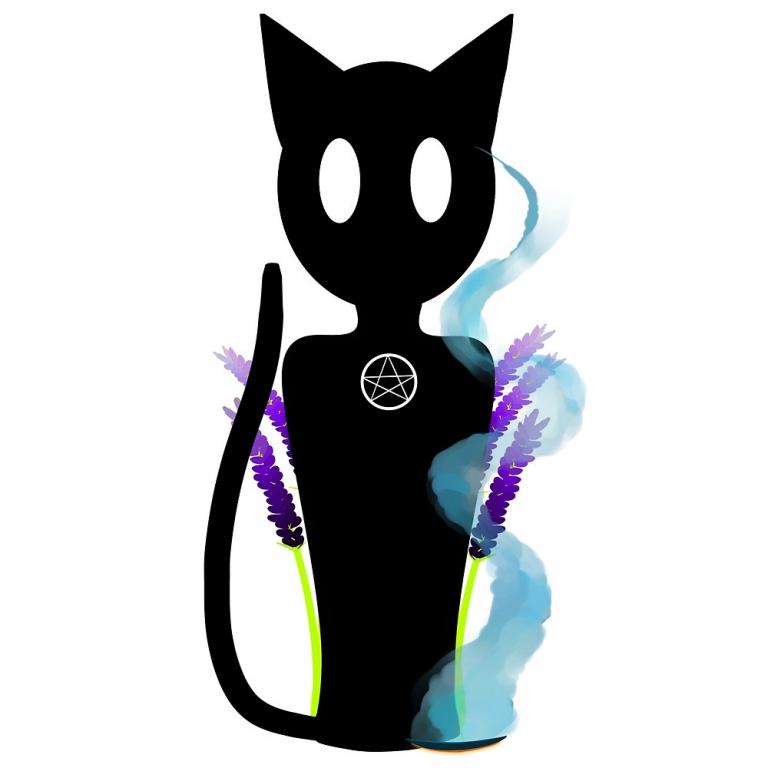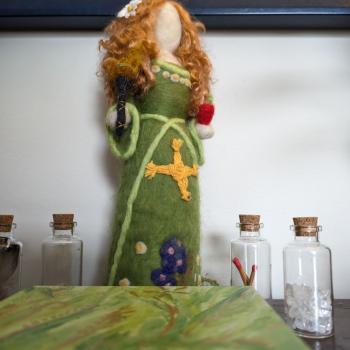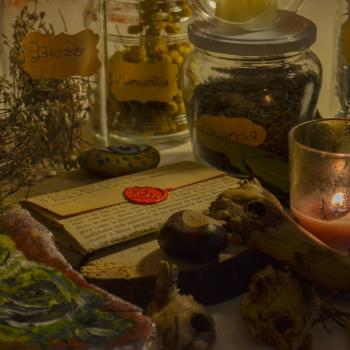Today is Friday the 13th. A day of bad luck and superstition for a lot of people. But is it really? Afterall, we have a Harvest Moon which is considered auspicious. Does the effect of one override the other? How do superstitions, such as the one surrounding Friday the 13th, originate? And what kind of magick might we consider performing on what is deemed by culture an “unlucky” night?
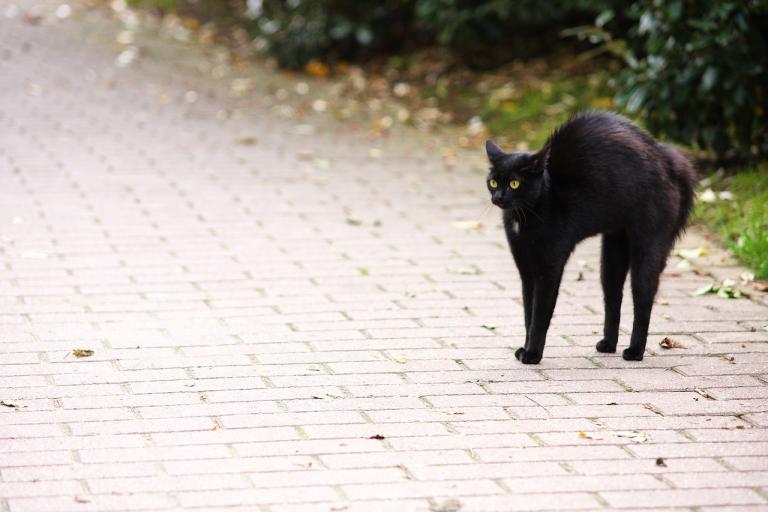
Black cats and pavement cracks as superstition.
Long held to have a supernatural connection, a black cat might be an omen of good or evil depending on where you live. Western and European folklore associate black cats with bad luck, devils and witches, much of the belief coming from the Medieval Christian Church. However, in the United Kingdom and Asian cultures the black cat represents prosperity, protection, fruitful harvest and good fortune. In the 18th century, pirates and sailors would have a black “ships” cat for good luck at sea. But where do these notions come from?
Superstitions are based in the belief of a supernatural influence leading to certain consequences for an action or event. Quite often, those consequences tend to be negative or based in irrational fear.
For instance, the well known childhood refrain of “step on a crack, break your mother’s back.” There are several potential origins for this superstition, and variations on the theme, some of which have racial bias as their connection. However, the most recognizable version is based on a past belief that cracks in the ground or pavement led directly to the underworld. According to legend, stepping on a crack released “demons” into the world, bringing “bad luck” to the offender. In this case, breaking their mother’s bones.

How does a superstition begin?
Historians suggest superstitions are born out of experience and an attempt to explain the environment of one’s world. This was especially true for our ancestors. As a result, superstitions have been passed down for thousands of years into the consciousness of multiple cultures. Whether a superstition has a positive or negative connotation depends on the experienced (or perceived) outcome of an event or action.
For instance, throwing salt over the shoulder harkens back to the Romans and a time when salt was a precious commodity. To spill even a little was regarded as an opening to bad luck. Throwing a few grains of salt over the left shoulder with the right hand was meant to appease negative spirits who might otherwise do harmful things to a careless individual. Enough people performed the ritual with a recognized positive result, confirming the action into cultural behavior. Many superstitions still observed have similar beginnings.
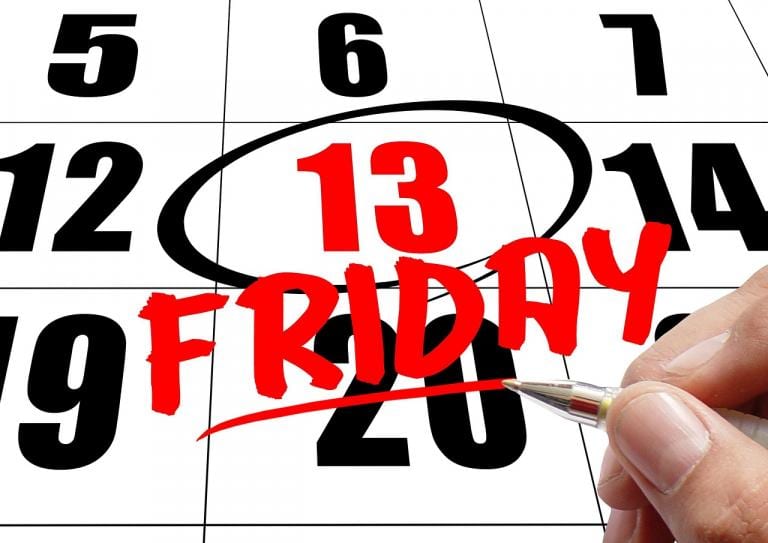
Religion plays its role in superstition.
Friday the 13th became known as an “unlucky” day in the Middle Ages through Church lore. Supposedly, Eve fed “the apple” to Adam on a Friday. The Last Supper of Jesus took place on the Friday before his death with 13 people in attendance. The number of coils on a hangman’s noose is 13 with the execution taking place on a Friday.
The Knights Templar were arrested and tortured on October 13, 1307. And one theory suggests the number originally represented femininity (goddess) as it corresponded to the number of lunar (13 x 28 = 364 days) cycles. As Christianity spread, the solar calendar (which made particular Church holidays more convenient to observe) triumphed over the lunar, confirming the number 13 as undesirable. There are modern examples of unfortunate events which occured with the use of the number, such as the Apollo 13 Moon Mission, which had to be aborted when an explosion crippled the ship. The number 13 is considered so unlucky there is even a diagnosable phobia to go along with it.
However, not everyone views the number as inherently bad. Italians hold it as a lucky number over 17. The number 13 was sacred to the Aztecs, standing for time and completion. An Aztec week lasted thirteen days and was called a Trecena. The goddess Tlazolteotl (a deity of vice and purification, among other things) ruled the 13th Trecena. The 13th card of a Tarot deck is Death. Because of the number’s negative associations, many people believe the card is scary or bad. However, in a Tarot reading the Death card represents transformation. Letting go of the old to make room for something new.

A Friday the 13th Harvest Moon.
As a Witch, I’m excited to celebrate a Harvest moon on Friday the 13th. For me, the number and day is lucky, powerful, and representative of Goddess energy. We had powerful thunder storms this morning, so I set out a bowl to catch rainwater to use for luck spells. You can be sure I’ll also leave it to charge under the Harvest Moon tonight and tomorrow. What’s so special about a Harvest Moon?
This is the full moon closest to the Autumn Equinox. Farmer’s can normally use the Harvest moon’s light to continue working the fields later into the evening. This Harvest moon will be a micromoon, however, so it will appear smaller in the sky. Even so, the energy can be used as preparation for celebrating Autumn, a time which draws our attention to the need for balance, etc. One might use the time to meditate in the moon’s energy or connect with Goddess. What I look forward to is spending time removing emotional and spiritual clutter. Let me share with you what I plan to do after spending time meditating and preparing for spellcasting:
Harvest Moon Lucky 13 Spell
What You’ll Need:
- One Black Candle — or choose a color which seems right to you.
- A Tarot “Death” card –sitting up so that you can see it.
- A Piece of Paper
- Bottle of Dragons Blood Ink — optional
- Writing Implement — This can be a quill or feather if using Dragons Blood Ink. Otherwise a pen or pencil will do)
- A fire-safe vessel such as a cauldron
Take a moment to focus on the card. Remember that it is the 13th card of your deck. A sacred card of change. Then, think about what it is you want to remove from your life (bad habits, emotional/spiritual clutter, toxic relationships). Write why you want to remove this thing from your heart/mind/life. Try to find 13 reasons your life will be better without this clutter. If you cannot, write the number 13 on your paper.
Light the candle.
Focusing on what you need to remove, light the paper on fire.
Place the paper in cauldron.
While the paper burns, focus your intention on the Death Card.
Speak an incantation which feels right or release the spell with a simple “So Mote It Be.”

